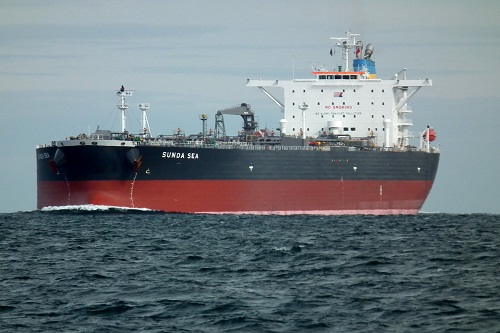
Viewpoint: Europe Suezmax, Aframax markets challenged


High levels of tanker scrapping may continue throughout 2019, assuming vessels become candidates for demolition at around 20 years old. According to shipbroker Howe Robinson, the global tanker fleet includes 19 Suezmaxes and 55 Aframaxes older than that.
Net global fleet growth is still likely in both markets. The equivalent of 6pc of the existing Suezmax fleet is scheduled for delivery in 2018-19, and 4pc comprises candidates for scrapping. In the Aframax segment, new tanker deliveries represent 7pc of the existing fleet, and those for scrapping 6pc. So, Suezmax fleet growth may exceed growth in the Aframax segment.
The build-up to and implementation of IMO 2020 may reduce effective fleet growth in both sectors. Shipowners wishing to fit existing tankers with exhaust-cleaning systems known as scrubbers will likely do so out of natural dry dock, estimated to take 30 days. This will sporadically reduce tonnage capacity throughout 2019, and provide opportunities to boost spot market earnings.
Scrubber-free tankers may steam slowly to reduce fuel consumption as bunkers become more expensive, which could lengthen journey times and reduce overall tonnage supply.
Scrubber uptake has been limited, with up to 60 scrubber-fitted Suezmaxes delivered or under order, representing 11pc of the total fleet. Only 10 Aframaxes have been equipped with scrubbers, representing 1pc of the global fleet, likely because of lower scrubber efficiency on smaller tankers.
Time-charter agreements could tie up a large proportion of scrubber-fitted tankers, as charterers rush to secure quality tonnage, and this would leave even fewer scrubber-equipped tankers on the spot market.
There are concerns about high costs and uncertain availability of compliant low sulphur fuel oil (LSFO) for scrubber-free tankers. Bunker prices could double in 2020, by some calculations, and shipowners will struggle to pass costs on to charterers. Shipowners will have to absorb higher fuel prices, or accept the costs of scrubber installation.
Latest estimates place scrubber costs at $1.7mn for a Suezmax newbuild and $1.3mn for an Aframax newbuild. Retrofitting vessels is more expensive, estimated at $2.4mn for Suezmaxes and $2mn for Aframaxes. Scrubber-fitted tankers will only pay for their installation costs if the spread between high sulphur fuel oil (HSFO) and LSFO prices is wide enough.
High retrofitting costs contributed to significant scrapping levels throughout 2018, which is positive for tanker markets. Argus data indicate 26 Suezmax tankers left the water during the first 10 months of 2018, more than double the number of a year earlier. Scrapping of Aframaxes increased by 91pc to 42 for the same period this year.
Fleet growth will slow as 2020 edges closer, which could provide supply-demand balance beyond 2019. However, there is growing uncertainty as IMO 2020 approaches, particularly in terms of compliant fuel price and availability, which could dampen shipowner earnings. European Suezmax markets might be more variable than Aframax markets in the next six months.
The former sector will be affected if Opec and allied non-Opec producers' recent agreement to reduce oil production by 1.2mn b/d in the first half of 2019, compared with October 2018 levels is fully implemented — the European Suezmax sector is sensitive to west African output fluctuations.
Libya's exemption from the agreement could support the cross-Mediterranean Aframax and Suezmax markets, although the volatile political and social situation imposes a risk of production reductions.
US sanctions on Iran's oil industry resumed on 5 November, and the resultant removal of Iranian state-owned tonnage from the water might have a positive effect on tanker markets. Although the US granted six-month waivers for Italy, Turkey and Greece to allow for continued purchases of Iranian crude, Iranian tankers are unlikely to return to the Mediterranean. The effects of US sanctions are more noticeable in the very large crude carrier (VLCC) market.


Trump weighs using $2 billion in CHIPS Act funding for critical minerals

Codelco cuts 2025 copper forecast after El Teniente mine collapse

Electra converts debt, launches $30M raise to jumpstart stalled cobalt refinery

Barrick’s Reko Diq in line for $410M ADB backing

Abcourt readies Sleeping Giant mill to pour first gold since 2014

Nevada army depot to serve as base for first US strategic minerals stockpile

SQM boosts lithium supply plans as prices flick higher

Viridis unveils 200Mt initial reserve for Brazil rare earth project

Tailings could meet much of US critical mineral demand – study

Kyrgyzstan kicks off underground gold mining at Kumtor

Kyrgyzstan kicks off underground gold mining at Kumtor

KoBold Metals granted lithium exploration rights in Congo

Freeport Indonesia to wrap up Gresik plant repairs by early September

Energy Fuels soars on Vulcan Elements partnership

Northern Dynasty sticks to proposal in battle to lift Pebble mine veto

Giustra-backed mining firm teams up with informal miners in Colombia

Critical Metals signs agreement to supply rare earth to US government-funded facility

China extends rare earth controls to imported material

Galan Lithium proceeds with $13M financing for Argentina project

Kyrgyzstan kicks off underground gold mining at Kumtor

Freeport Indonesia to wrap up Gresik plant repairs by early September

Energy Fuels soars on Vulcan Elements partnership

Northern Dynasty sticks to proposal in battle to lift Pebble mine veto

Giustra-backed mining firm teams up with informal miners in Colombia

Critical Metals signs agreement to supply rare earth to US government-funded facility

China extends rare earth controls to imported material

Galan Lithium proceeds with $13M financing for Argentina project

Silver price touches $39 as market weighs rate cut outlook

















